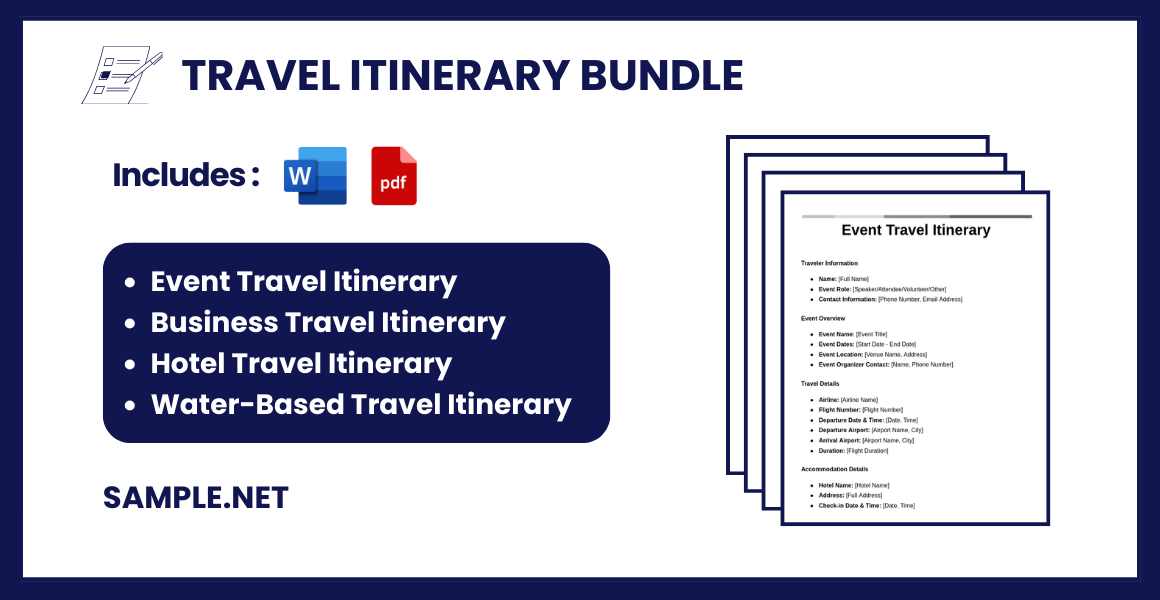
Download Travel Itinerary Bundle
Travel Itinerary Format
Traveler Information
- Name: [Full Name]
- Contact Information: [Phone Number, Email Address]
- Emergency Contact: [Name and Phone Number]
Trip Overview
- Purpose of Travel: [Business/Leisure/Other]
- Destination(s): [City, Country]
- Travel Dates: [Start Date – End Date]
Flight Details
Departure Flight
- Airline: [Airline Name]
- Flight Number: [Flight Number]
- Departure Date & Time: [Date, Time]
- Departure Airport: [Airport Name, City]
- Arrival Airport: [Airport Name, City]
- Duration: [Flight Duration]
Return Flight
- Airline: [Airline Name]
- Flight Number: [Flight Number]
- Departure Date & Time: [Date, Time]
- Departure Airport: [Airport Name, City]
- Arrival Airport: [Airport Name, City]
- Duration: [Flight Duration]
Accommodation Details
- Hotel Name: [Hotel Name]
- Address: [Full Address]
- Check-in Date & Time: [Date, Time]
- Check-out Date & Time: [Date, Time]
- Contact Number: [Hotel Phone Number]
- Reservation Number: [Confirmation/Reservation Number]
Daily Schedule
Day 1: [Date]
- Morning: [Activity/Location/Time]
- Afternoon: [Activity/Location/Time]
- Evening: [Activity/Location/Time]
Day 2: [Date]
- Morning: [Activity/Location/Time]
- Afternoon: [Activity/Location/Time]
- Evening: [Activity/Location/Time]
(Repeat as necessary for additional days)
Transportation Details
- Rental Car/Service: [Provider Name, Contact Information]
- Pickup/Drop-off Location: [Location Details]
- Public Transportation: [Train/Bus Details]
Important Notes
- Travel Insurance Details: [Provider Name, Policy Number, Contact Information]
- Vaccination/Health Requirements: [COVID-19, Yellow Fever, etc.]
- Visa Requirements: [Details for the destination country]
Local Contacts
- Tour Guide Name: [Name and Contact Information]
- Local Emergency Numbers: [Police, Ambulance, Fire]
Travel Itinerary Samples
-
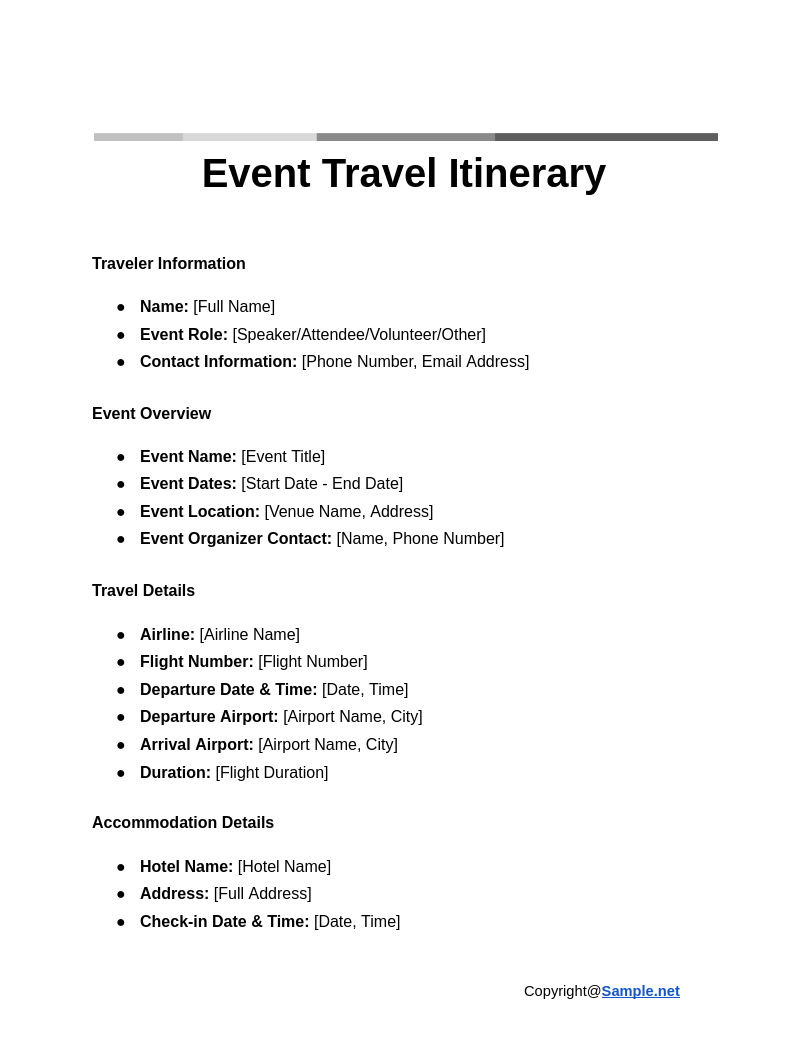
Event Travel Itinerary
download now -
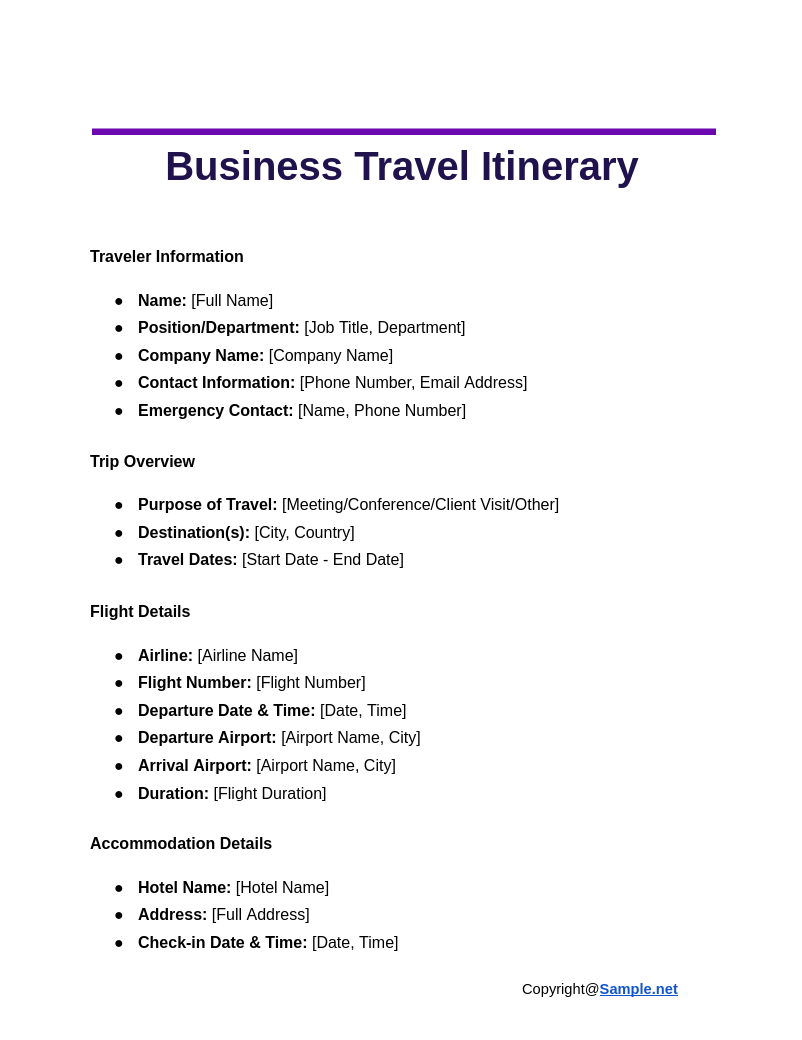
Business Travel Itinerary
download now -

Hotel Travel Itinerary
download now -

Water-Based Travel Itinerary
download now -
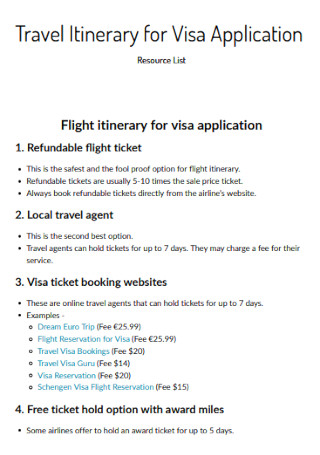
Travel Itinerary for Visa Application
download now -
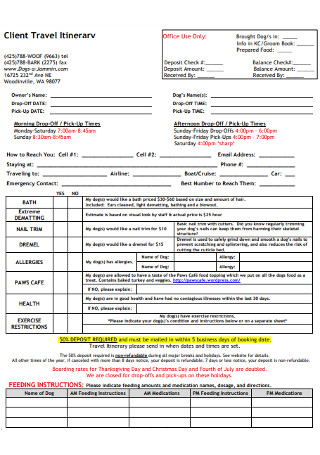
Client Travel Itinerary
download now -
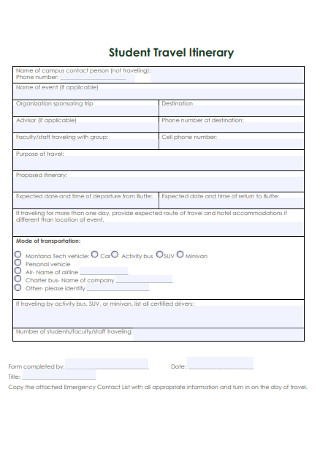
Student Travel Itinerary
download now -
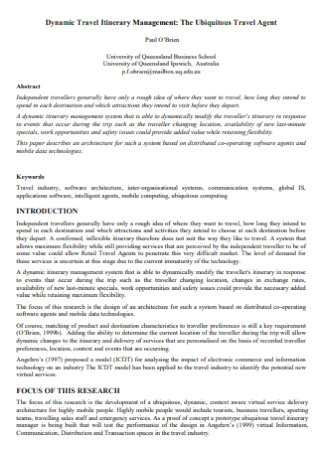
Dynamic Travel Itinerary
download now -
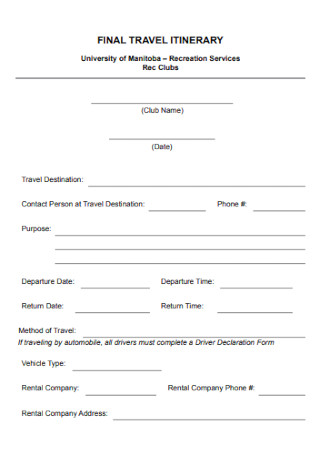
Final Travel Itinerary
download now -

Travel Itinerary Form
download now -
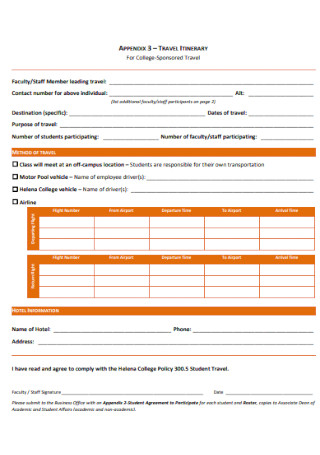
Travel Itinerary for College
download now -

Travel Contract Itinerary
download now -
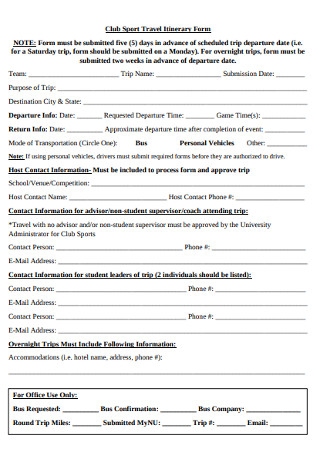
Club Sport Travel Itinerary
download now -
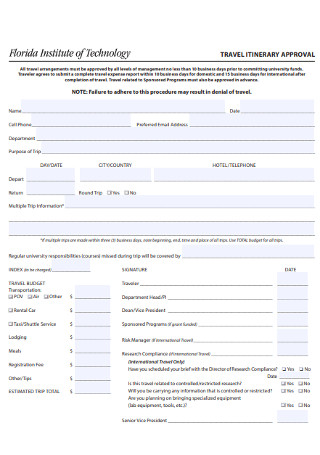
Travel Approval Itinerary
download now -
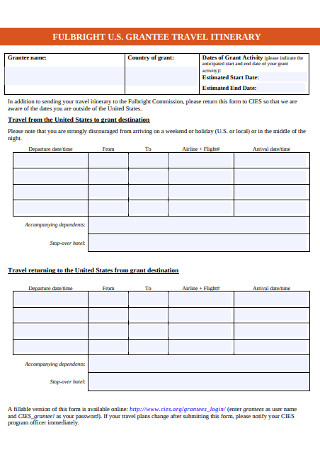
Grantee Travel Itinerary
download now -
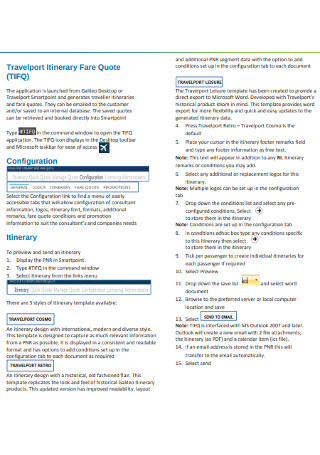
Travelport Itinerary
download now -
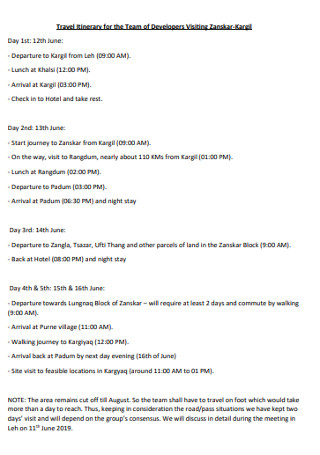
Travel Itinerary for Team Developers
download now -
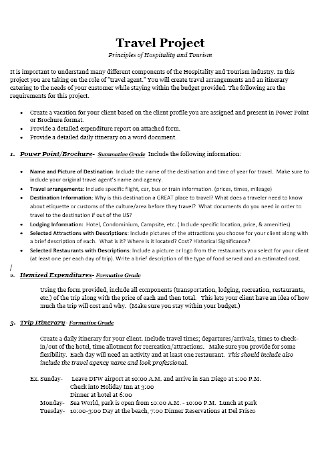
Travel Itinerary Project Template
download now -

Study Travel Itinerary
download now -

Student Travel Itinerary
download now -

Club Travel Itinerary
download now -
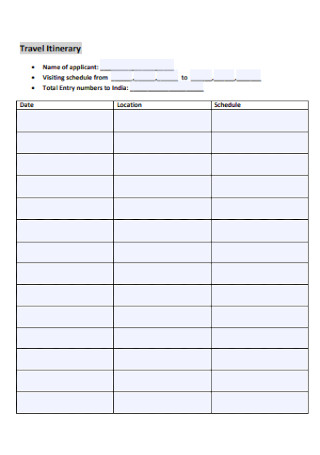
Travel Itinerary Format
download now -
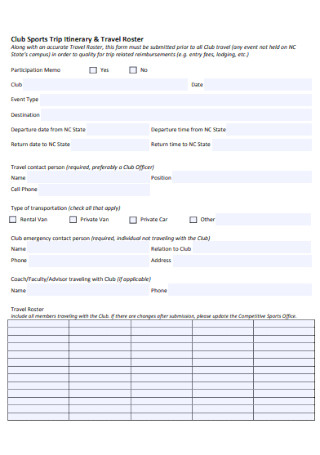
Club Sports Trip Itinerary
download now -
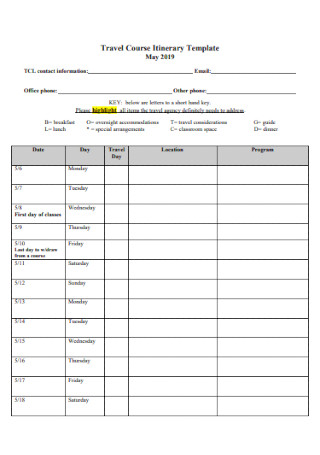
Travel Course Itinerary Template
download now -
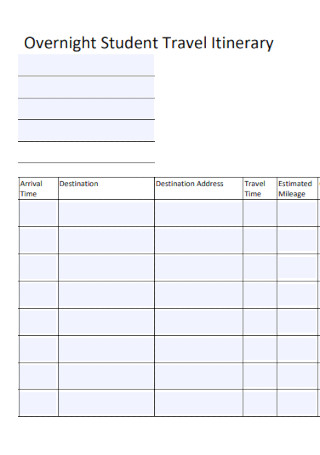
Overnight Student Travel Itinerary
download now -
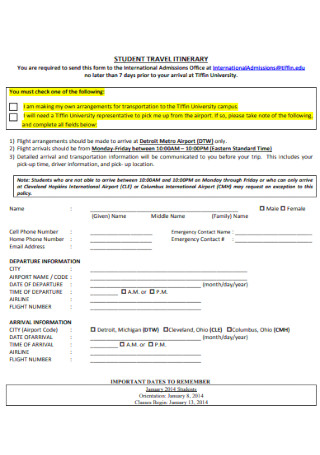
Student Travel Itinerary Template
download now -
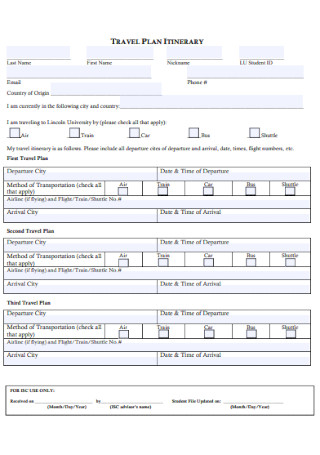
Travel Plan Itinerary
download now -

Club Sport Travel Itinerary Form
download now -

Standard Travel Itinerary
download now -
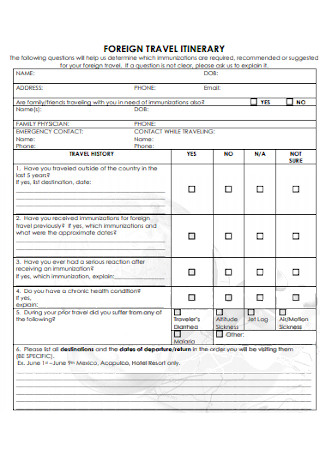
Foreign Travel Itinerary
download now -
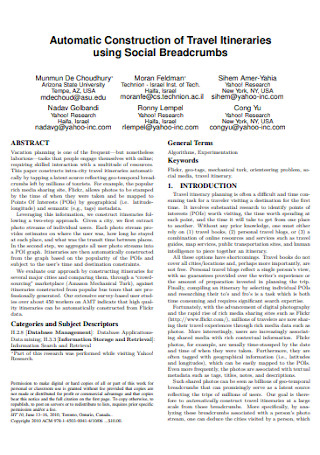
Automatic Construction of Travel Itineraries
download now -
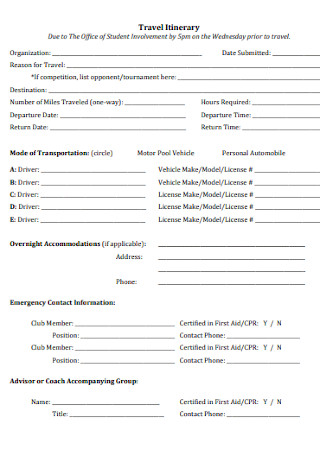
Formal Travel Itinerary
download now -
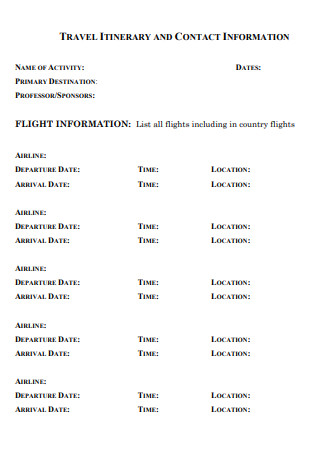
Travel Itinerary Contract Template
download now -
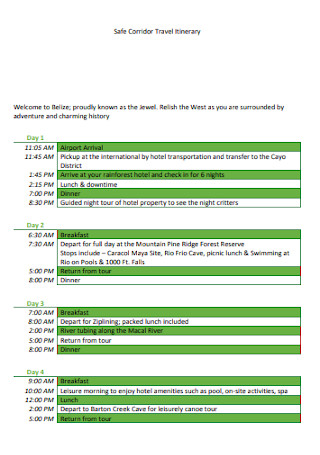
Safe Corridor Travel Itinerary
download now -
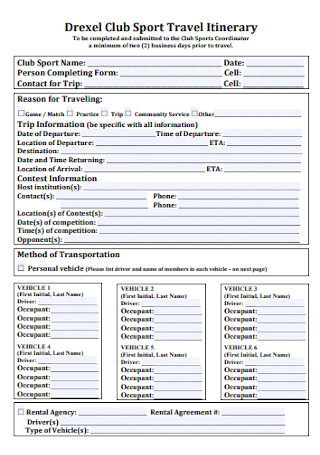
Club Sport Travel Itinerary Template
download now -

Itinerary Preparation and Tour Packaging
download now -
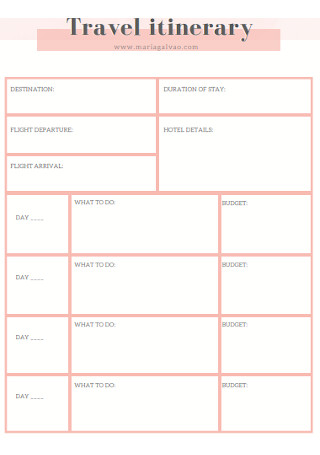
Travel and Trip Itinerary
download now -
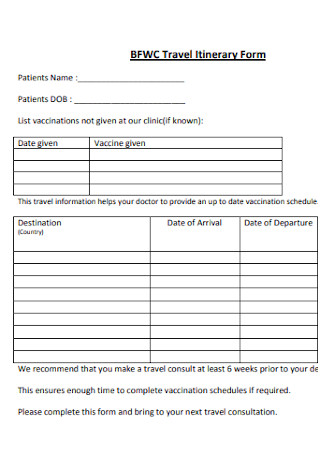
Travel Itinerary Form Format
download now -
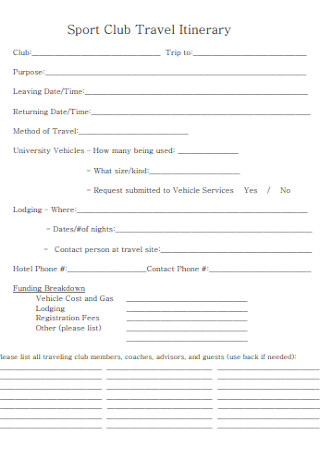
Sports Club Travel Itinerary
download now -

Graphical Travel Itinerary
download now -
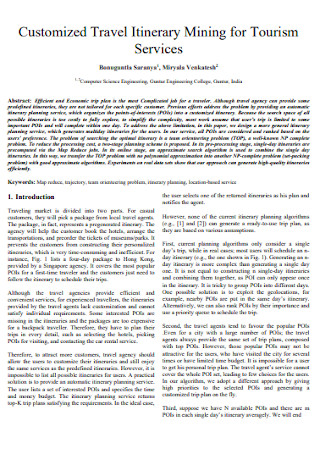
Travel Itinerary Mining for Tourism
download now -
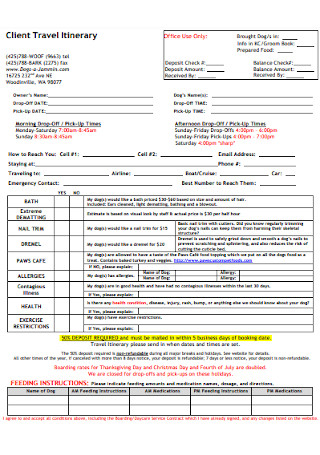
Client Travel Itinerary Template
download now -
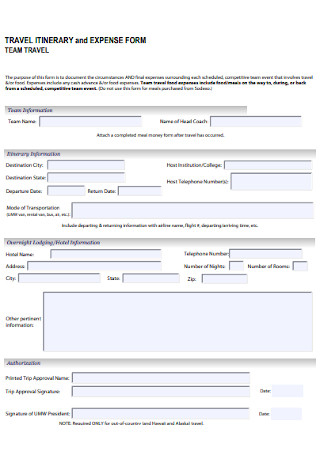
Travel Itinerary and Expense Form
download now -
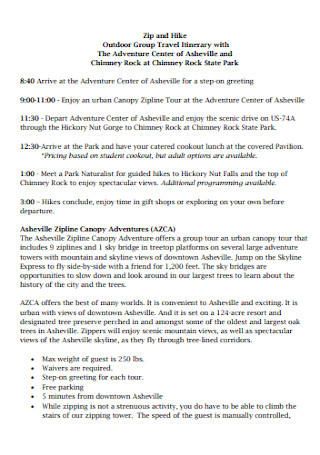
Outdoor Group Travel Itinerary
download now -
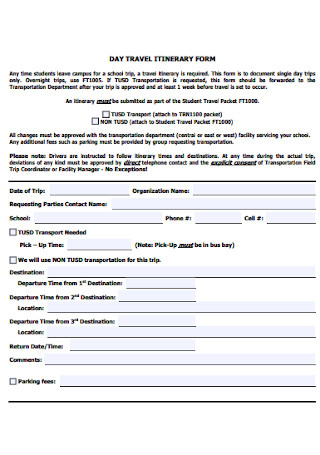
Day Travel Itinerary Form
download now -
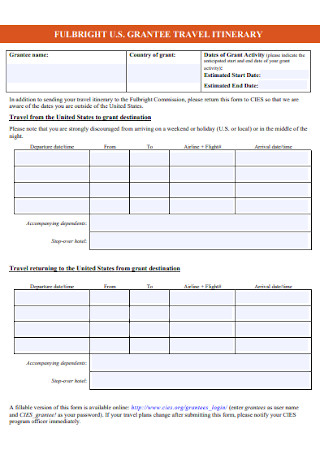
Grantee Travel Itinerary Template
download now
What is a Travel Itinerary?
A travel itinerary is a structured outline that contains all the essential details of a trip. It typically includes destinations, dates, transportation modes, accommodation details, activities, and key points of interest. A well-crafted itinerary serves as a personal roadmap, ensuring travelers make the most of their time and sample budget while enjoying a stress-free experience. Whether for leisure or business, an itinerary keeps plans clear and manageable.
Components of a Travel Itinerary
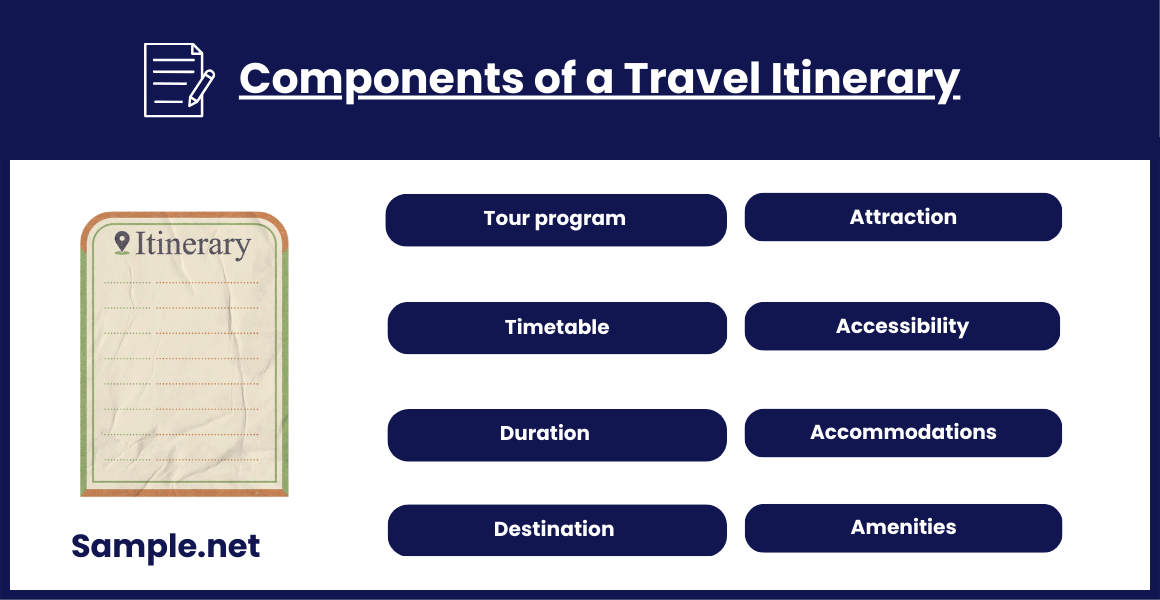
Itineraries come in different forms, depending on the purpose of travel, in the form of a business plan, the route of a road trip, or a proposed outline for a travel plan. Depending on what the purpose is, there are possible changes in the contents of the itinerary. Here are the components of a travel itinerary that are more likely to show up in any document.
How to Create a Travel Itinerary
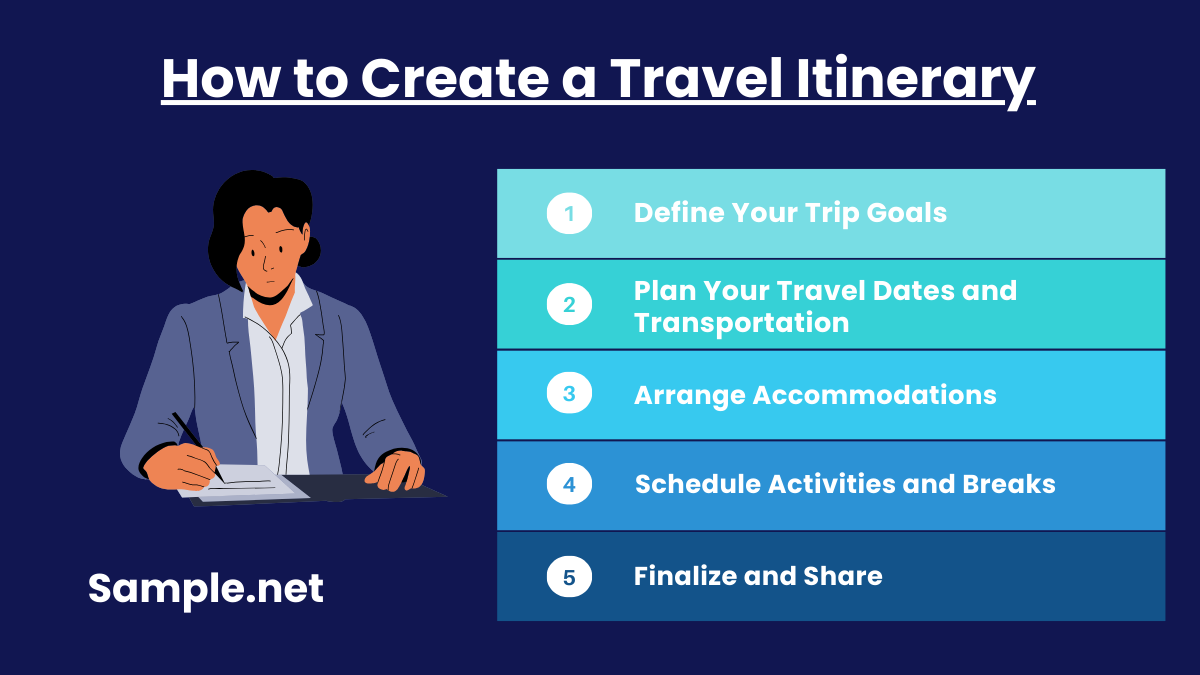
Step 1: Define Your Trip Goals
Start by identifying the purpose of your trip. Decide whether it’s for leisure, business, or adventure. Research your destination to list attractions, landmarks, or experiences that align with your goals. This clarity helps in setting priorities and creating a practical schedule.
Step 2: Plan Your Travel Dates and Transportation
Select your travel dates and book transportation, such as flights, trains, or car rentals. Consider factors like travel time, layovers, and local commute options. Add this information to your itinerary, ensuring alignment with your planned activities. You can also see more on Daily Work Schedules.
Step 3: Arrange Accommodations
Research and book accommodations that match your budget and preferences. Include the address, contact information, and check-in/check-out times in your itinerary. Proximity to key attractions should also be considered for convenience.
Step 4: Schedule Activities and Breaks
Plan daily activities, including sightseeing, dining, and leisure time. Balance packed schedules with free time for relaxation or spontaneous exploration. Use local guides or reviews to make informed choices.
Step 5: Finalize and Share
Review your itinerary to ensure all details are accurate. Include emergency contacts, reservation codes, and any backup plans. Share your itinerary with companions or trusted individuals for safety and easy coordination.
A travel itinerary transforms your trip into a well-organized adventure. By planning transportation, accommodation, and activities in advance, it ensures a stress-free and enjoyable experience. It not only enhances efficiency but also provides a safety net for unforeseen circumstances. Whether you’re exploring new cities or revisiting familiar destinations, an itinerary is the cornerstone of successful travel planning. Remember, a good itinerary balances structure with flexibility, making your trip both organized and exciting. You can also see more on Retreat Schedules.
FAQs
What is the importance of a travel itinerary?
A travel itinerary helps you and your group navigate through a trip schedule by writing a concise plan. It is necessary to supply an itinerary to maximize your time during a trip. It ensures you manage your time well and indicate your travel time to several attractions with a margin for events of unforeseen circumstances. It also helps in managing expenses through estimating costs of the travel beforehand. Take the time to research the latest prices or fees of your destination, and in doing so, you know which objects or attractions the charges align with, helping you with budgeting. A travel sample itinerary also allows for safer and easier travel through discerning reliable routes and planning to visit attractions that are close to each other. It also helps prioritize your preferences when it comes to a tour. Lastly, forgetting trip essentials rarely happen. It is necessary to write items you need during your travel, including valuable items, clothes, medicines, and emergency numbers.
Is it advantageous to hire a travel agent for a travel itinerary?
Personally planning your travel itinerary is okay; however, it is advisable to consider hiring a travel agent for it. It is advantageous because these individuals have the expertise and experience to help you plan a trip according to your preferences. In a sense, they are very knowledgeable in their craft. Good travel agents know the best accommodations and attractions, getting you good deals in the process. When it comes to emergencies, having a travel agent is highly beneficial. A good travel agent monitors their clients’ condition and makes necessary arrangements for the entire trip. They would also have connections to book reservations to restaurants, attractions, and accommodations despite peak seasons and scarcity. Aside from that, they also offer cheaper flight deals than the ones you see online.
Should you travel long distances or short distances?
At present, traveling out of the country is only available for passengers that are considered essential workers. Leaving the nation is not an option given the pandemic the entire world is facing. However, once everything is back to normal, travel is one of the many things people intend to do, either back to their home countries, business, or leisure purposes. For leisure travel, it’s worth considering managing your budget and expectations. A local trip is ideal if there is not enough time in your schedule and the journey is spontaneous. It is best to go for long drives and stay over for a day or two with friends and family to relax. If sufficient time and budget are available, then an international trip is manageable. It helps if the trip has an itinerary for you to follow, ensuring no wasted time or money. It is advisable to travel according to your present resources, and if it is insufficient, plan a trip for next time. You can also see more on Budget Estimate.
How does a travel itinerary enhance safety?
An itinerary ensures that key details like addresses, contact numbers, and schedules are readily available. Sharing it with loved ones helps in tracking your journey and responding promptly in emergencies.
How flexible should a travel itinerary be?
An ideal itinerary balances structure and flexibility. While it outlines key activities, leaving room for spontaneous exploration ensures a more enjoyable experience.
How can travel itineraries benefit group travel?
They help coordinate schedules, manage shared expenses, and align group activities, ensuring everyone is on the same page and the trip runs smoothly. You can also see more on Project Plan Budget.